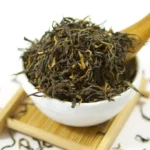In the cozy living room of a quaint cottage, a warm and comforting aroma fills the air as a kettle gently whistles on the stove. It’s the year 2003, and the afternoon sun casts a gentle glow through the window, illuminating a delicate porcelain teapot and a set of intricately patterned teacups. As the clock strikes three, friends and family gather around the table for a traditional tea ceremony.In 2003, the world’s fascination with coffee reached new heights, with the aroma of freshly roasted beans permeating cities and towns alike. Coffeehouses buzzed with life as baristas honed their craft, turning each cup into a masterpiece.
In 2004, tea remained a cherished beverage, embraced by people around the world for its soothing qualities and rich cultural heritage. As the year unfolded, tea enthusiasts continued to engage in the age-old tradition of brewing and savoring this aromatic beverage.
Tea houses and specialty shops offered an array of tea varieties, from traditional black and green teas to exotic herbal blends. People sought solace in a cup of warm tea, finding comfort in its familiar aroma and gentle flavors.
In 2005, the soothing aroma of tea wafted through cozy kitchens and bustling cafes alike. Tea was not just a beverage; it was a moment of tranquility in a rapidly changing world. As the morning sun filtered through the curtains, people would reach for their favorite tea leaves or tea bags, carefully preparing a cup of comfort. The teapot’s gentle whistle echoed the promise of warmth, both from the liquid within and the memories it held.
In 2019, the world of tea witnessed a continued resurgence in interest, blending tradition with innovation. The year brought about a renewed focus on the diverse flavors, health benefits, and cultural significance of tea.
In 2019, the coffee landscape was marked by an exploration of new brewing methods, heightened sustainability efforts, and the emergence of coffee as a lifestyle choice.
The specialty coffee movement continued to grow, with consumers showing an increased interest in single-origin coffees, direct trade, and the unique flavor profiles associated with different coffee-growing regions. Third-wave coffee shops gained momentum, focusing on craftsmanship and elevating the coffee-drinking experience.
The year 2020 brought unprecedented challenges and changes to the way people around the world lived and interacted due to the COVID-19 pandemic. In the realm of tea and coffee, these beloved beverages took on new roles as sources of comfort, connection, and adaptation.
The tea and coffee industries adapted to the changing landscape as well. Cafés and tea houses pivoted to offer takeaway and delivery services. Online tea and coffee retailers saw an uptick in sales as individuals sought to recreate the café experience in their own homes. Companies embraced digital marketing and engagement strategies to stay connected with their customers.







